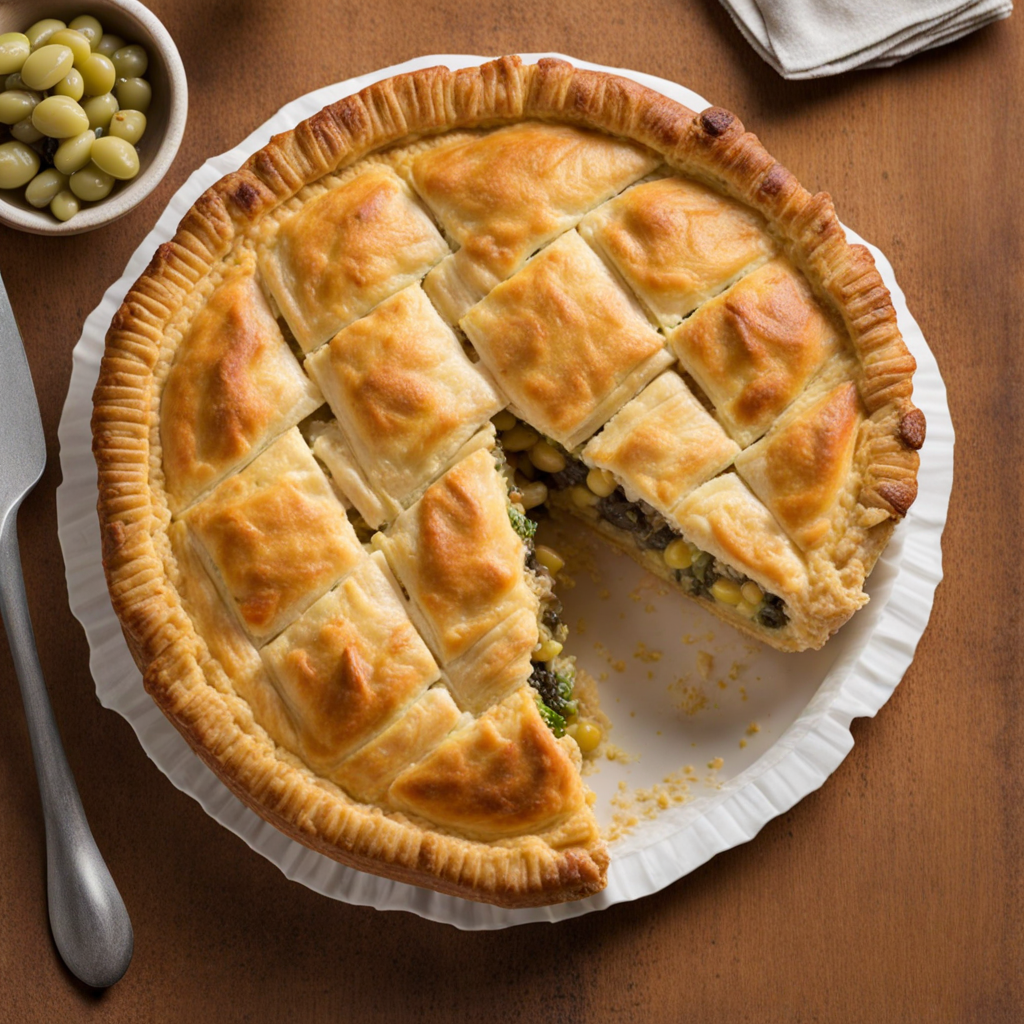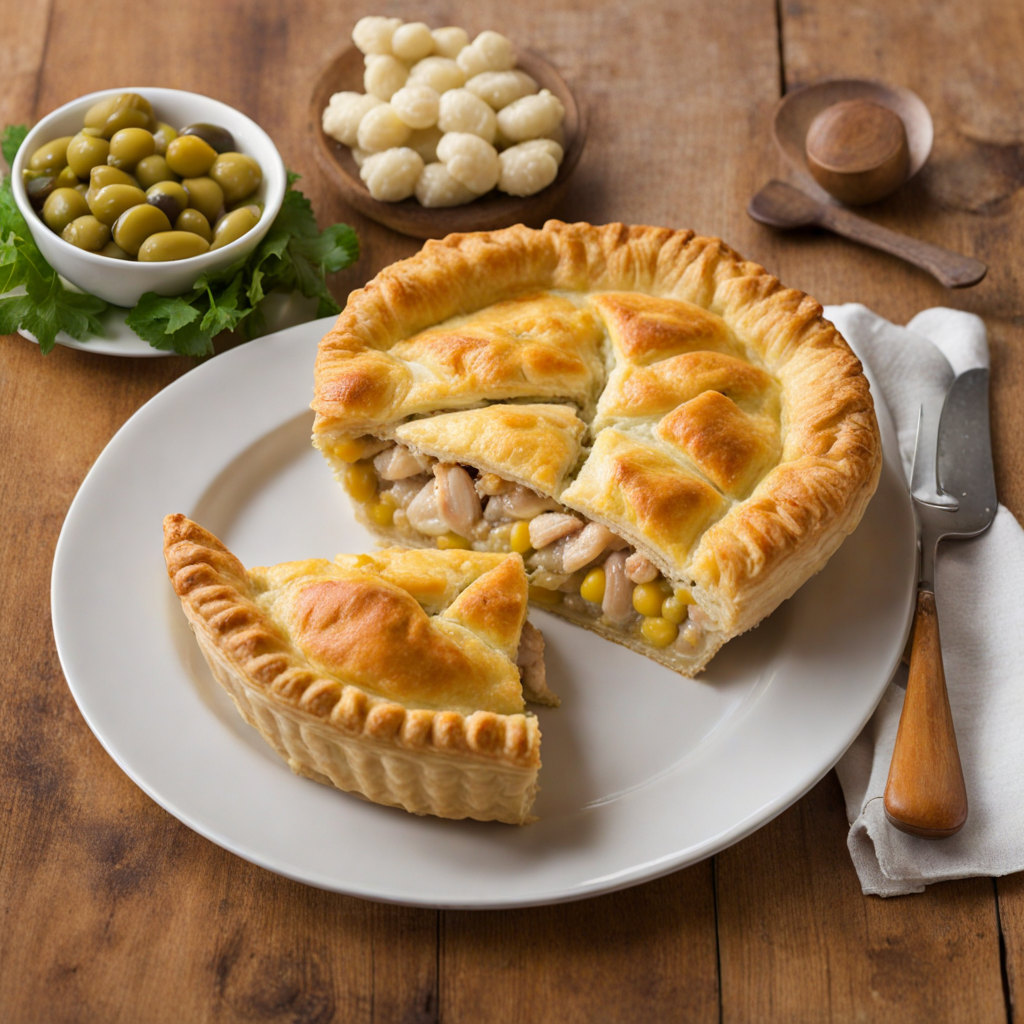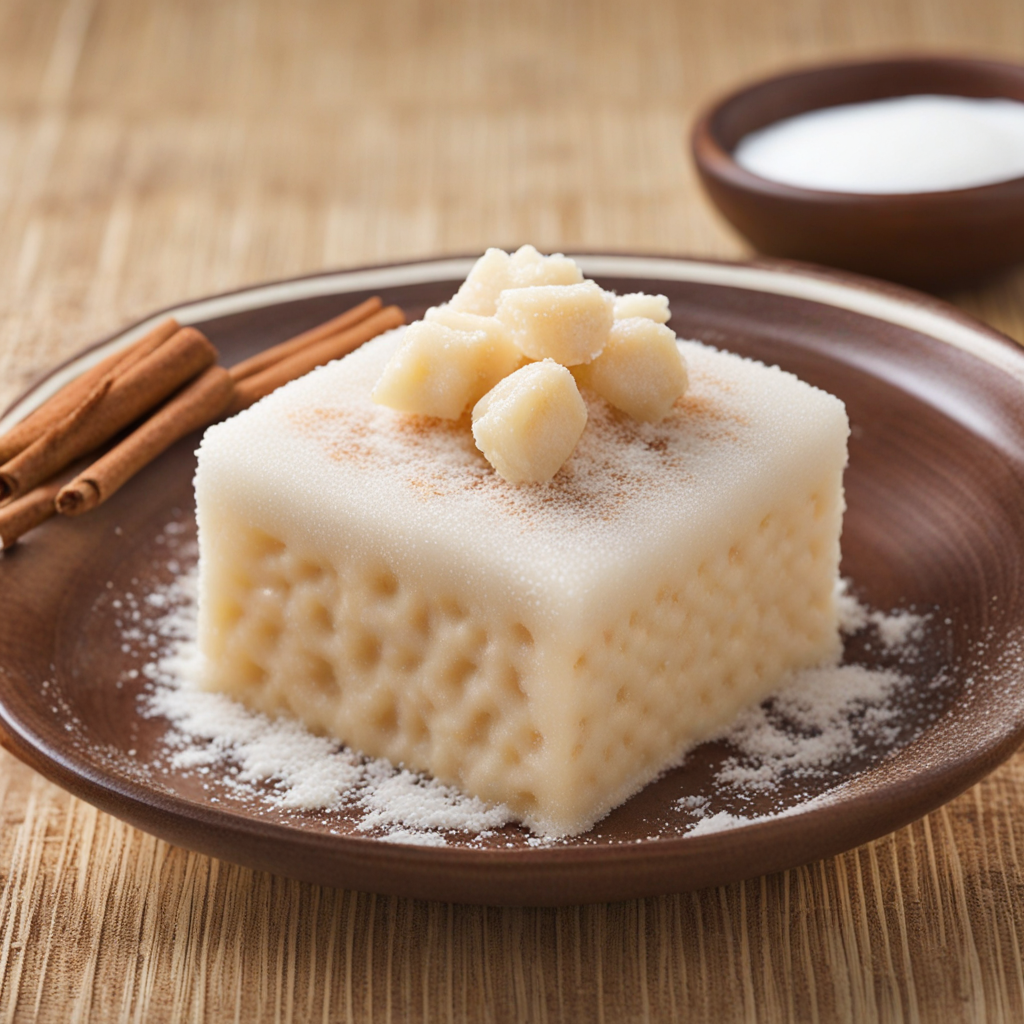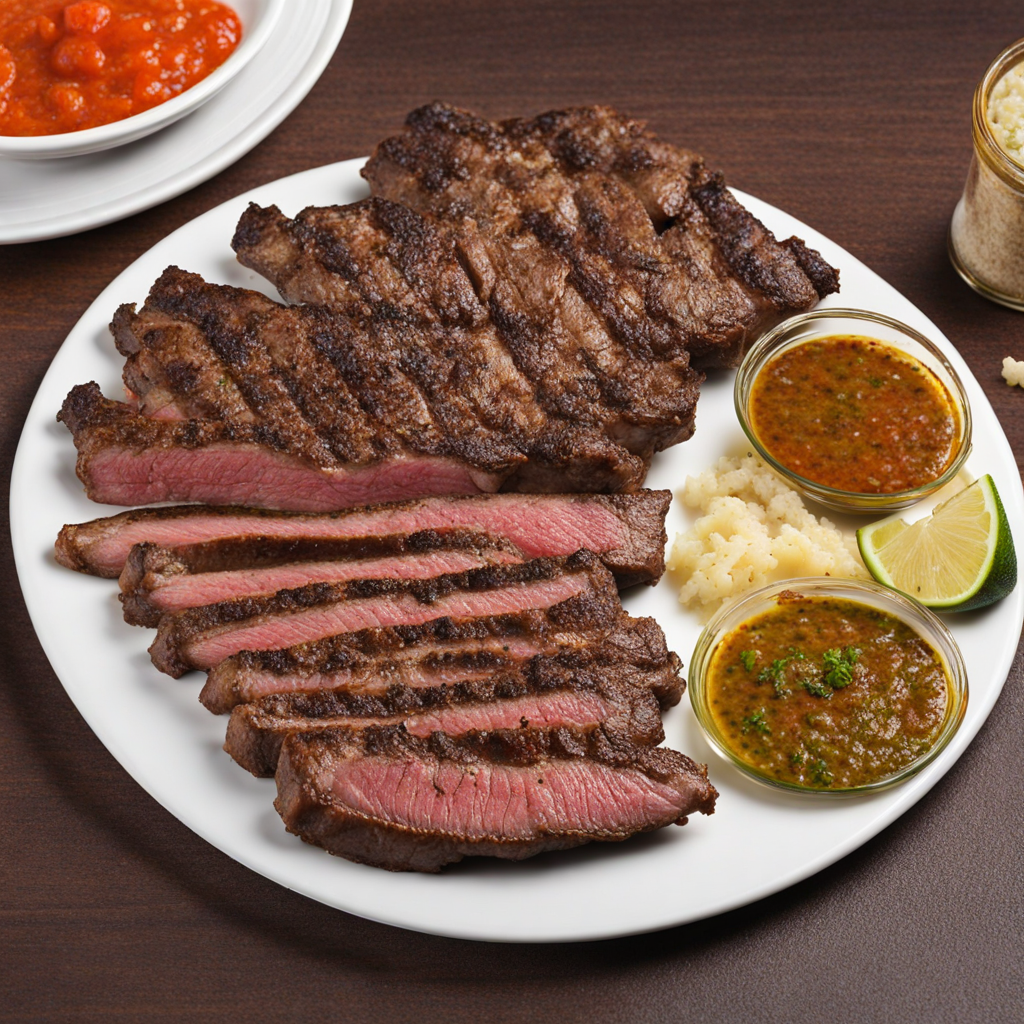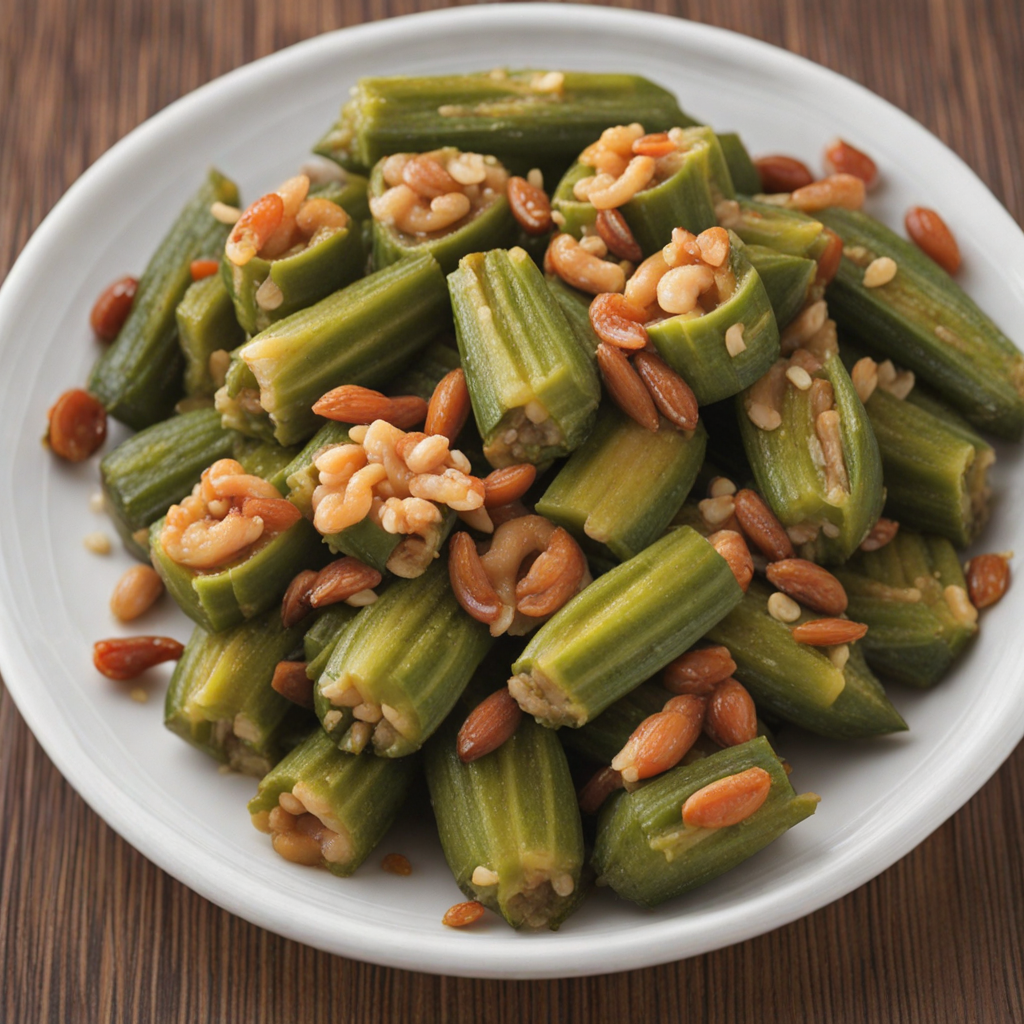Empadão
Empadão is a traditional Brazilian savory pie that embodies the rich and diverse flavors of Brazilian cuisine. At its core, this dish features a flaky, buttery crust that envelops a hearty filling, making it a comfort food staple in many Brazilian households. The crust is often made with a combination of wheat flour, butter, and eggs, resulting in a tender texture that perfectly complements the robust fillings. The golden-brown exterior not only looks inviting but also provides a satisfying crunch when you take your first bite. What truly sets Empadão apart is its versatile filling, which can vary widely depending on regional preferences and personal tastes. Common fillings include shredded chicken, beef, or even a medley of vegetables, all seasoned with herbs and spices that reflect the vibrant flavors of Brazil. Some variations incorporate cheese, olives, or a touch of tomato sauce, adding depth and richness to the dish. The filling is often cooked before being encased in the crust, allowing the flavors to meld beautifully, resulting in a deliciously savory experience. This dish is often enjoyed as a main course or served at gatherings and celebrations, making it a beloved choice for both casual meals and festive occasions. Empadão can be served warm or at room temperature, making it an excellent option for picnics or potlucks. When you take a bite, the combination of the flaky crust and the flavorful filling creates a delightful balance that is both comforting and satisfying, inviting you to explore the heart of Brazilian culinary traditions.
How It Became This Dish
The History of Empadão: A Brazilian Culinary Treasure The Empadão, a savory pie filled with an array of ingredients ranging from seasoned meats to vegetables, is a cherished dish in Brazilian cuisine. Its roots, cultural significance, and evolution reflect the rich tapestry of Brazil's culinary heritage and the country's diverse influences. #### Origins: A Culinary Crossroad The origins of Empadão can be traced back to the Portuguese "empada," a pastry that dates back to the Middle Ages. The word "empada" itself derives from the Latin "impingere," meaning to encase or enclose. The Portuguese brought this dish to Brazil during their colonization in the 16th century, and over time, it evolved into a distinctly Brazilian creation. As with many traditional dishes, the Empadão was influenced by the indigenous peoples of Brazil, who cultivated a variety of ingredients such as cassava, corn, and a wide range of vegetables. The melding of these native ingredients with European techniques and flavors created a unique culinary identity that defined Brazilian cuisine. The dish was further enriched by the African influence that came through the transatlantic slave trade, as enslaved Africans brought their own cooking methods and flavors to the Brazilian gastronomic landscape. #### Cultural Significance Empadão is not merely a dish; it holds cultural significance in Brazilian society. It is often associated with family gatherings, celebrations, and communal events. The preparation of Empadão is an activity that brings people together, often requiring a collective effort in the kitchen. Families across Brazil have their own cherished recipes, passed down through generations, making the preparation of this dish a labor of love that reinforces familial bonds and cultural identity. In Brazilian culture, food is a vital aspect of social life, and dishes like Empadão are emblematic of this. It is common to find Empadão served at festive occasions such as weddings, birthdays, and holidays. The dish embodies the spirit of sharing and hospitality, making it a favorite at gatherings. Its versatility allows for variations that cater to different tastes and preferences, whether it be meat-based, vegetarian, or even sweet versions. #### Ingredients and Preparation The traditional Empadão is characterized by its flaky pastry crust, which envelops a filling that can include a mix of chicken, beef, or pork, often combined with vegetables, spices, and sometimes cheese. The use of spices and herbs reflects Brazil's diverse culinary landscape, incorporating elements from European, African, and Indigenous cuisines. The preparation of Empadão typically involves creating a dough from flour, butter, and water, which is then rolled out and used to line a pie dish. The filling is prepared separately, often sautéing the meat with onions, garlic, and spices before adding any additional ingredients. The filled pie is then topped with another layer of pastry and baked until golden brown. This method of cooking results in a crispy outer crust and a savory, flavorful interior. Evolution Over Time As Brazil underwent significant social, political, and economic changes throughout the 19th and 20th centuries, so too did its culinary landscape. The Empadão adapted to these changes, reflecting the evolving tastes and needs of Brazilian society. The rise of urbanization and industrialization in the late 19th century led to more people moving to cities, where they brought their regional recipes with them. This migration facilitated a fusion of flavors and cooking styles, resulting in various regional adaptations of Empadão. In the southern regions of Brazil, for example, Empadão often features local ingredients such as chimichurri, a herby sauce, and is sometimes even made with local cheeses. Meanwhile, in the northeastern states, the inclusion of spices like dendê oil and coconut milk can be found, showcasing the distinct culinary influences of these areas. The 20th century also saw the emergence of modern culinary trends, including a focus on health and sustainability. This led to the creation of lighter, whole-grain crusts and vegetarian versions of Empadão, catering to changing dietary preferences. Chefs began experimenting with gourmet versions, incorporating ingredients like truffle oil or exotic mushrooms, which allowed the dish to transcend traditional boundaries and appeal to a wider audience. #### Empadão in Contemporary Brazil Today, Empadão remains a beloved staple in Brazilian households and restaurants. It can be found in various forms across the country, from street vendors offering quick bites to upscale restaurants presenting gourmet versions. The dish has also gained international recognition, with Brazilian expatriates introducing it to global culinary scenes. Moreover, social media has played a significant role in the popularization of traditional Brazilian dishes, including Empadão. Home cooks and professional chefs alike share their unique takes on the dish, showcasing its adaptability and inviting new generations to engage with their culinary heritage. In recent years, food festivals and cultural events have celebrated Brazilian cuisine, often featuring Empadão as a centerpiece. These events foster a sense of pride in Brazilian culinary traditions while encouraging a dialogue about the importance of preserving food heritage in an increasingly globalized world. #### Conclusion The Empadão is more than just a dish; it is a symbol of Brazil's rich cultural history, a testament to the fusion of indigenous, African, and European influences that define the nation’s culinary identity. Its evolution over time reflects the adaptability and resilience of Brazilian cuisine, making it a cherished part of the country's gastronomic tapestry. As the world continues to embrace globalization, dishes like Empadão serve as reminders of the importance of local ingredients, traditional techniques, and the stories that food carries with it. Whether enjoyed at a family gathering or a festive celebration, the Empadão remains a beloved culinary treasure that connects Brazilians to their past while paving the way for future generations to savor and share its delightful flavors.
You may like
Discover local flavors from Brazil


